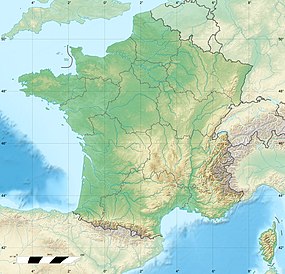Fontéchevade
| Grotte de Fontéchevade | |
| Alternate name | Fontéchevade |
|---|---|
| Location | Charente department, in Nouvelle-Aquitaine |
| Coordinates | 45°40′6.27343″N 0°28′47″E / 45.6684092861°N 0.47972°ECoordinates: 45°40′6.27343″N 0°28′47″E / 45.6684092861°N 0.47972°E |
| Type | Cave |
| History | |
| Material | limestone Karst |
| Periods | Lower Paleolithic |
| Associated with | Paleo-humans |
Fontéchevade is a cave in Charente, France which contains Palaeolithic remains from 200,000 and 120,000 years ago. The fossils consist of two skull fragments. Unlike Neanderthals and Homo sapiens of the time, the frontal skull fragment lacks any development of a browridge. This feature led French paleoanthropologists of the time to propose the “pre-sapiens” theory, in which the line to modern humans was said to have branched off before the appearance of the Neanderthals. Subsequent research has cast doubt on the importance of the Fontéchevade evidence. One of the fossils may be from an immature individual or from a period of time later than its surrounding deposits. The other does not preserve the browridge area, but other aspects of its morphology are similar to those seen in Neanderthals.
...
Wikipedia


